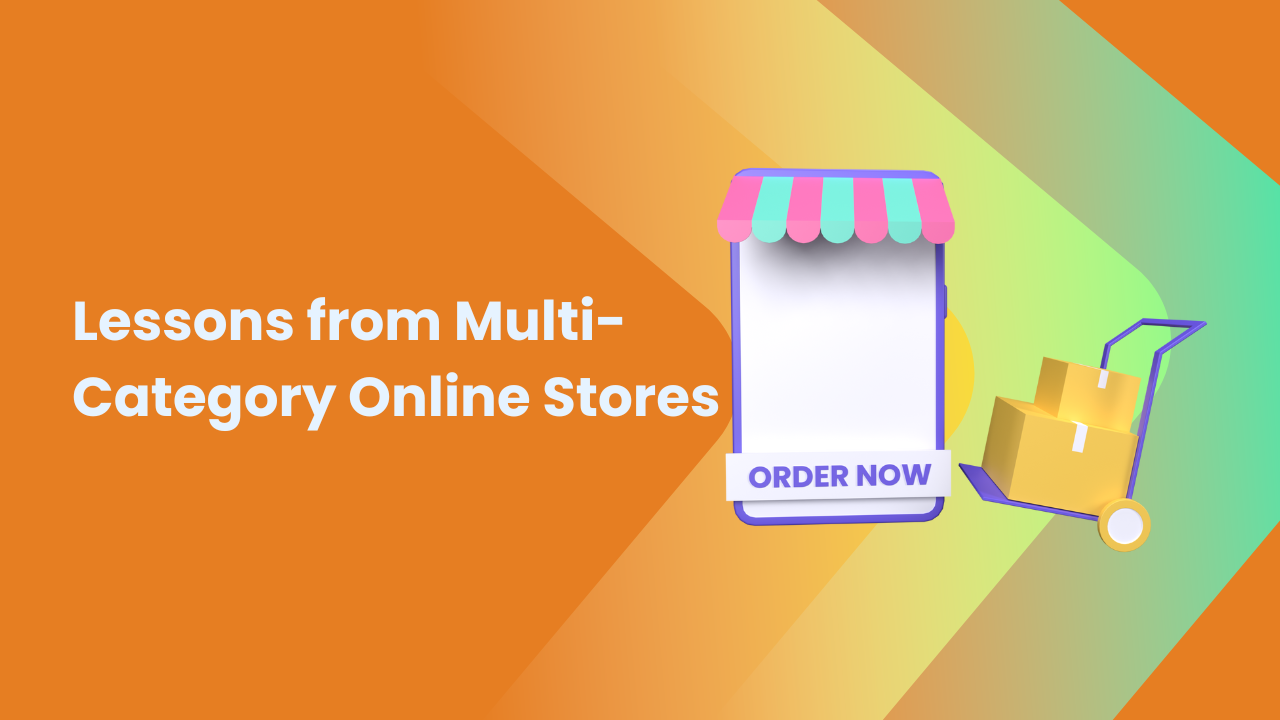Share this Article
The retail sector in Nepal is undergoing a profound transformation, propelled by the surge of e-commerce and the increasing digitalization of consumer behavior. This digital revolution is reshaping traditional retail paradigms, presenting both challenges and remarkable opportunities for businesses. From small enterprises to large conglomerates, the e-commerce boom is driving innovation in product distribution, marketing strategies, and customer engagement, fundamentally altering how Nepali consumers interact with retail.
In this context, it's essential to delve into the multifaceted impact of e-commerce on the Nepali retail landscape, exploring how it is redefined consumer purchasing behavior, providing new growth avenues for businesses, and influencing the very structure of the retail industry in Nepal.
1. Expanding Market Access: Breaking Geographic Barriers
Historically, the retail market in Nepal was concentrated in a few metropolitan areas like Kathmandu, Pokhara, and Lalitpur, limiting the accessibility of diverse products to consumers in rural or remote regions. However, with the rise of e-commerce platforms, businesses are now able to transcend these geographic barriers, unlocking nationwide access to a broader consumer base.
Strategic Shifts:
- Wider Reach Beyond Urban Centers: E-commerce enables retailers to extend their reach to rural areas where traditional retail options have been limited. Online platforms are providing access to a wider array of goods—from fashion apparel and electronics to local handicrafts and agricultural products—making them accessible to a diverse demographic, including those residing in remote parts of Nepal.
- Expansion of Product Assortment: As a result, e-commerce platforms have effectively introduced a variety of products that were previously unattainable due to logistics limitations, creating a more competitive marketplace where price-conscious consumers can easily compare products and access the best deals.
- Delivery Infrastructure Advancements: The improvement of last-mile delivery logistics has allowed businesses to penetrate rural and isolated markets, making the delivery of goods more reliable and timely.
2. Evolving Consumer Behavior: The Digital Shift
With the increased adoption of digital technologies and smartphones, Nepali consumers are rapidly transitioning from traditional shopping methods to online purchasing. The surge in e-commerce is driven largely by the younger, tech-savvy demographic, but it is extending beyond youth to include middle-aged and even older consumers who now prefer the convenience and accessibility that online shopping offers.
Key Behavioral Shifts:
- Convenience-Centric Shopping: E-commerce offers consumers unparalleled convenience—shopping anytime, anywhere, and having products delivered directly to their doorstep. This level of convenience is a significant catalyst driving the rapid adoption of online shopping in Nepal.
- Digital Payment Integration: The increasing use of digital wallets like eSewa, Khalti, and IME Pay is gradually phasing out the reliance on cash-on-delivery (COD), fostering a shift towards more secure and efficient online payment systems. This change supports a streamlined checkout process and encourages higher transaction volumes.
- Social Media as a Shopping Catalyst: Platforms like Instagram, Facebook, and YouTube are increasingly influential in the Nepali shopping experience. Consumers are discovering new brands and products via targeted ads, user-generated content, and influencer partnerships, which drive purchasing decisions and reinforce brand loyalty.
3. Empowering Small Businesses: A Digital Marketplace for Local Entrepreneurs
E-commerce has democratized the retail sector, offering small businesses and local entrepreneurs the tools to compete with larger, established retailers. Handicraft vendors, boutiques, organic food producers, and a multitude of niche businesses are benefiting from e-commerce platforms to expand their customer base and access both local and international markets.
Strategic Impacts:
- Lower Barriers to Entry: By creating an online presence, small businesses can reach customers without the high overheads associated with maintaining physical storefronts. This cost-effective model enables entrepreneurs to operate on a much smaller budget while maintaining a global market presence.
- Global Market Access: Platforms like Etsy, Daraz, and HamroBazar allow Nepali small businesses to showcase their unique products—be it Nepali handicrafts or locally sourced organic goods—to a global audience, allowing them to break into international markets that were once difficult to access.
- Partnerships with Logistics Providers: E-commerce growth has fostered stronger relationships with logistics providers, ensuring that even the smallest enterprises can reliably deliver their products across urban and rural locations in Nepal.
4. Personalization and Customer-Centric Innovation
The global trend of personalized shopping experiences has found a significant foothold in Nepal’s e-commerce ecosystem. By leveraging customer data and advanced algorithms, businesses are tailoring the shopping journey to meet individual preferences, increasing consumer satisfaction, and ultimately driving conversion rates.
Emerging Trends:
- Targeted Marketing and Recommendations: E-commerce platforms are increasingly using data analytics to understand consumer preferences and offer personalized product recommendations. This level of customization not only enhances the shopping experience but also increases sales conversions and customer engagement.
- Loyalty Programs and Rewards: Many Nepali e-commerce companies are rolling out customer loyalty programs, offering discounts, reward points, and exclusive promotions to repeat customers, which strengthens customer retention and encourages long-term brand loyalty.
- Seamless Multi Channel Experience: The rise of omnichannel retailing—where brands offer both online and offline shopping options—enables a fluid and integrated shopping experience. Nepali retailers are increasingly incorporating features like click-and-collect, in-store pickup, and live chat support for a more dynamic customer experience.
5. The Hybrid Business Model: Integrating Traditional Retail with E-Commerce
As the retail landscape evolves, many traditional brick-and-mortar stores are embracing e-commerce as part of their broader business strategy. This hybrid model, combining both physical and online retail, allows businesses to reach a larger and more diverse consumer base, balancing the personal touch of in-store shopping with the convenience and reach of e-commerce.
Key Developments:
- Bricks-and-Clicks: Retailers are increasingly integrating online ordering with physical stores, allowing customers to shop both online and offline. For example, they may offer the option for customers to order online and pick up products at a physical store, combining the best of both worlds.
- Store-Based Fulfillment: Physical stores are increasingly becoming fulfillment centers for online orders. This shift in role allows businesses to leverage their existing infrastructure to fulfill e-commerce orders, thereby improving operational efficiency and reducing delivery times.
- Omnichannel Loyalty Programs: Retailers are merging in-store and online loyalty programs, providing a seamless experience for customers whether they are shopping online or in-store. This cohesion between physical and digital channels is crucial to retaining customers across multiple touchpoints.
6. Logistics and Delivery Evolution: Speed and Efficiency
The growing e-commerce sector in Nepal has led to a dramatic evolution in the logistics and delivery landscape. Consumers are increasingly demanding faster, more reliable delivery, and businesses are adapting by investing in advanced logistics solutions.
Key Innovations:
- Faster Last-Mile Delivery: Delivery companies like Yeti Express, Pathao, and Hamro Delivery are ensuring that products reach customers in record time, with same-day or next-day delivery becoming the norm in urban areas, and increasingly in rural locations as well.
- Real-Time Tracking: E-commerce companies are enhancing the post-purchase experience by providing real-time tracking for deliveries, enabling customers to monitor the status of their orders and ensuring greater transparency and trust in the system.
- Logistical Partnerships: Collaborations between e-commerce platforms and third-party logistics providers are improving the efficiency and reach of the supply chain, helping businesses meet growing consumer demands across Nepal.
Conclusion: The Future of Retail in Nepal
E-commerce is poised to continue shaping the future of retail in Nepal. As consumer behavior evolves, businesses must innovate to meet the demands of a digital-savvy and convenience-driven market. The integration of digital technologies, personalized shopping experiences, and seamless multi channel approaches will be crucial for the growth of Nepali retailers.
As Nepal's e-commerce ecosystem matures, businesses that can adapt to digital trends, foster customer loyalty, and build robust logistics networks will be best positioned to thrive. The ongoing digital transformation presents significant opportunities for small businesses, large corporations, and entrepreneurs alike to capitalize on the expanding market and take Nepali retail to new heights.
Categories:
E-commerce Tips & Tutorials
Tags:
e-commerce app
,
E-commerce
,
RetailRevolution
,
ShopOnlineNepal
,
FutureOfRetail
,
NepalEcommerce







